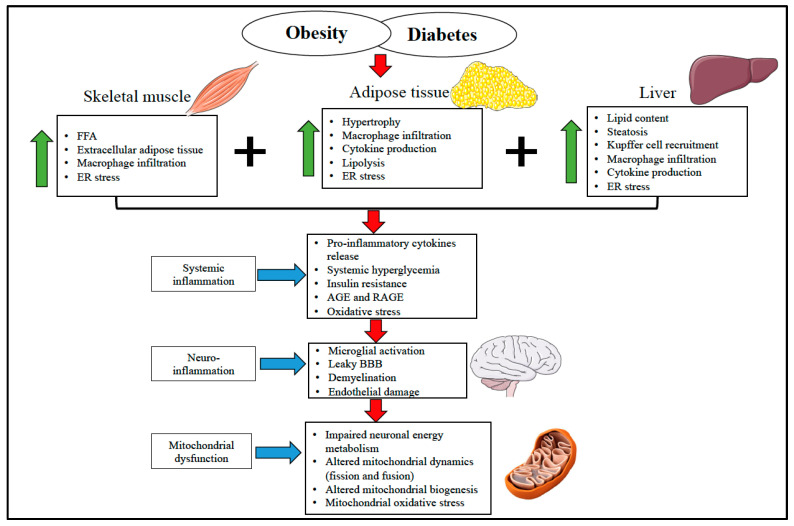Figure 1.
Overview of the diverse mechanism involved in obesity and diabetes-induced systemic and neuro-inflammation in mitochondrial and brain health. Skeletal muscle, adipose tissue, and liver are involved in glucose and lipid metabolism and play a vital role in developing adipose tissue dysfunction and insulin resistance during the obese condition. In obesity and diabetes, elevated free fatty acid, increased secretion of pro-inflammatory cytokines and macrophage infiltration, AGE and RAGE generation, and ER stress induce systemic inflammation. Systemic inflammation progressively initiates microglial activation, endothelial damage, and BBB disruption, which eventually leads to neuro-inflammation. These unfavorable inflammatory events alter the mitochondrial energy metabolism, mitochondrial dynamics, and biogenesis to escalate the mitochondrial oxidative stress collectively and trigger the mitochondrial assault. This gradually results in synapsis loss and neuronal death. FFA—Free Fatty Acid. ER—Endoplasmic Reticulum. AGE—Advanced Glycation End Products. RAGE—pattern recognition receptors of AGE. BBB—Blood-Brain Barrier.

